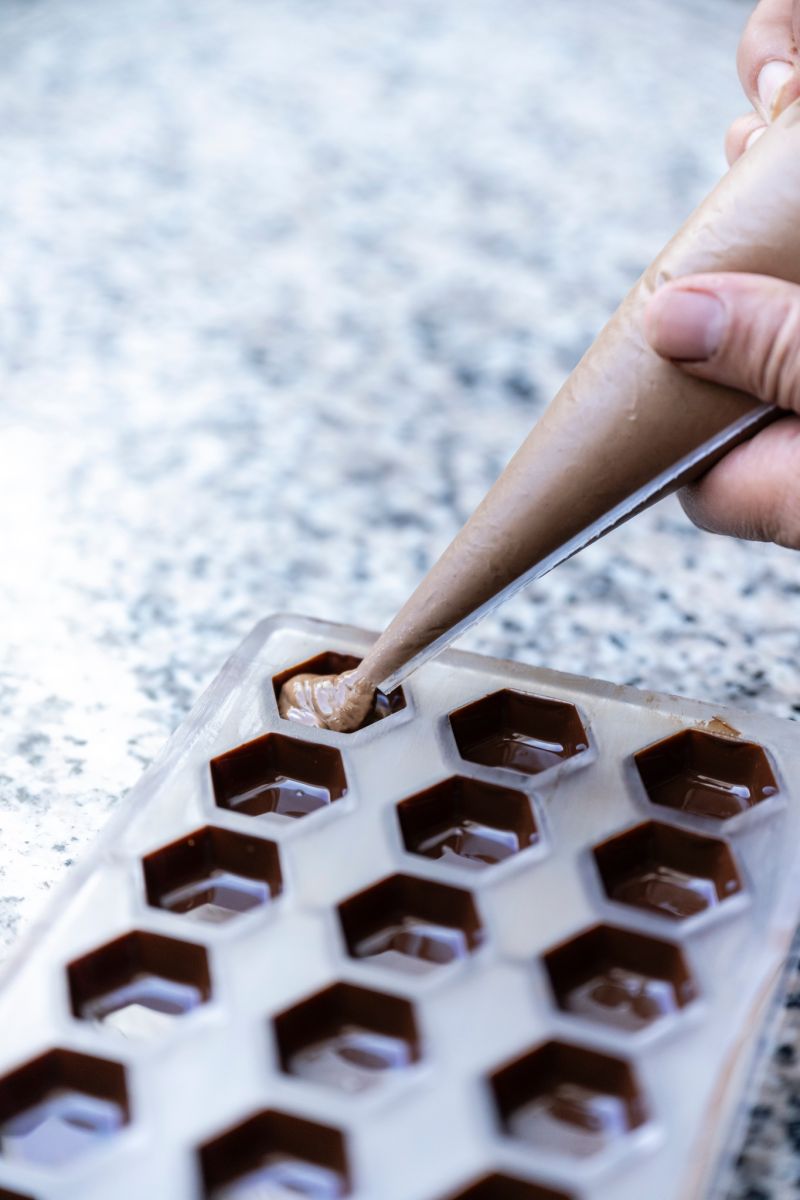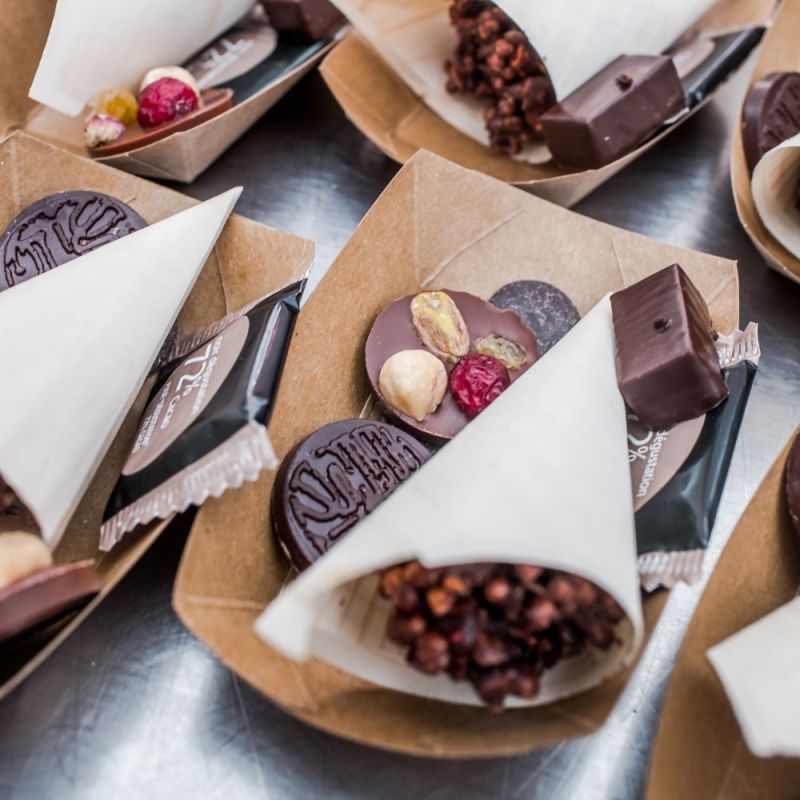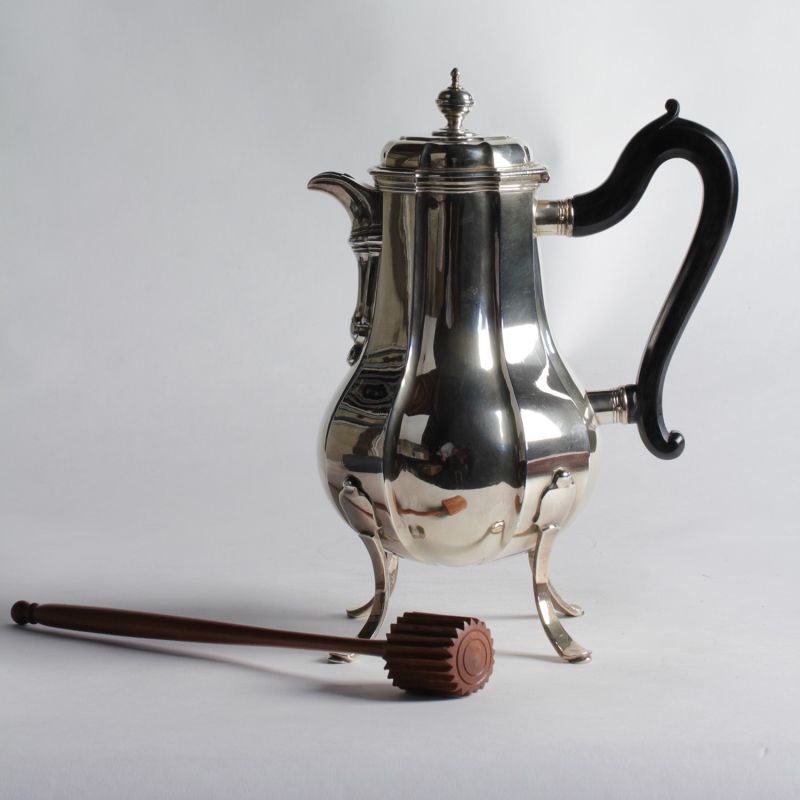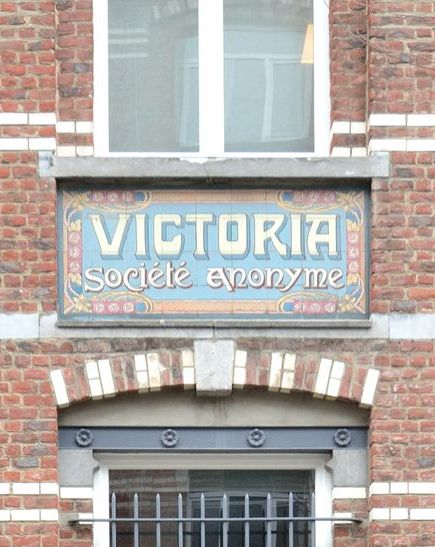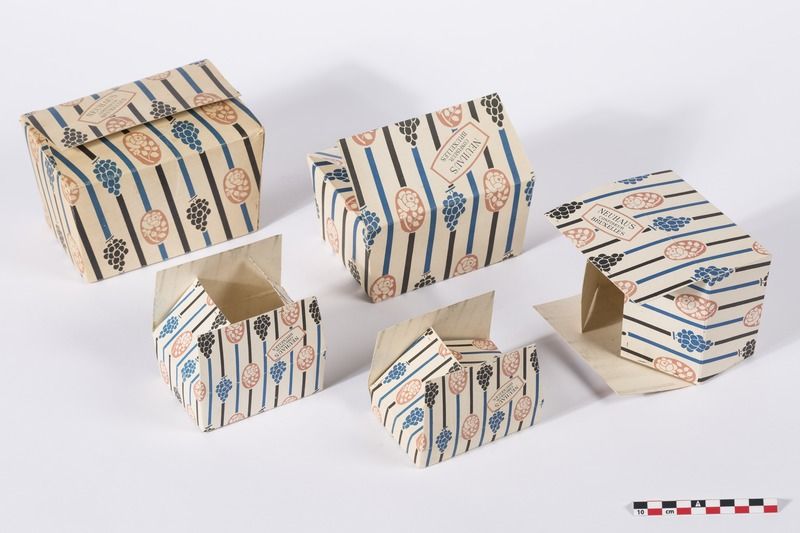On 6 May 2025, “the tradition and know-how of chocolate-making in Brussels” was officially included in the Brussels Capital Region’s inventory of intangible cultural heritage.
This splendid initiative was supported by the office of the State Secretary of the Brussels Capital Region, Urban and the non-profit organisation I Love Belgian Chocolate. Chocolate is hereby added to other Brussels culinary symbols: beer, French fries, speculoos, Belgian endives… and becomes the 22nd constitutive element of Brussels’ identity and culture!
Brussels is the first region in the country to include this tradition in its intangible cultural heritage inventory. It is a fitting tribute to this unique expertise that for over a century has contributed to the fame of our country, and Brussels in particular, seeing as it was the birthplace of many big names in the chocolate world as well as iconic creations such as the praline (a chocolate bonbon with a sweet filling) and its ballotin (a gift box for pralines), but also the place where a constantly evolving tradition of craftsmanship is passed on.
Brussels and its intangible cultural heritage
Intangible cultural heritage (ICH) is living heritage which continues to evolve, beyond the traditions and practices passed on from one generation to the next, thanks to the involvement of heritage communities.
Defined by the 2003 UNESCO Convention for the Safeguarding of the Intangible Cultural Heritage – ratified by Belgium in 2006 –, ICH is present in various areas, such as oral traditions and expressions, performing arts, social practices, rituals and festive events, knowledge and practices concerning nature and the universe or craft knowledge and skills.
Brussels is a multicultural capital, yet still has its own identity, with traditions that may be ancient but are still very much alive, and preserving them is a real challenge in a constantly changing region. As is also the case for the movable, immovable and natural heritage, Urban is responsible for preserving the Region’s intangible heritage, in particular through an inventory that identifies and promotes the cultural practices that are emblematic of Brussels’ identity, in close collaboration with the heritage communities.
Urban is also supporting the process to have Brussels’ ICH recognised as part of humanity’s intangible cultural heritage by UNESCO. To date, six elements are inscribed on that heritage list, the latest of which is the funfair culture in France and Belgium (2024).
Chocolate-making tradition and expertise in Brussels
○ A long love story
Chocolate arrived in Europe in the sixteenth century thanks to the Spanish conquistadors and really took off with the industrial revolution: numerous factories sprang up during the nineteenth century, notably in the Belgian capital. In 1883, the Brussels chocolatier Charles Neuhaus founded Côte d’Or, the iconic brand with the elephant. A few decades later, emblematic chocolate boutiques like Mary, Godiva or Corné emerge in Brussels.
In 1912, Jean Neuhaus Jr, whose shop in the Galerie de la Reine was one of the first, invented the praline. In 1915, his wife, Louise Agostini, created the famous ballotin, a gift box to present the chocolates elegantly. In 1935 and 1958, the universal exhibitions in Brussels helped promote chocolate with impressive pavilions such as those of Côte d’Or, which took the occasion to launch new creations such as the “Dessert 58” bar.
Today, Brussels is a true paradise for foodies, where more than 150 companies as well as 200 boutiques and workshops celebrate this unique know-how!
○ A cultural phenomenon
With an average consumption of 7 kg per Belgian per year, chocolate is a real cultural phenomenon in Belgium, and in Brussels in particular. It is more than just a product. It is a Belgian way of enjoying life, omnipresent in social practices, celebrations such as Valentine’s Day or Saint Nicholas’ Day, and recipes. This Belgian fondness for chocolate even extends to royalty, seeing as several chocolate brands have been recognised as “Licensed Suppliers to the Belgian Court”. Furthermore, portraits of the royal family have adorned many chocolate boxes since the interbellum.
○ The finest craftsmanship
Including chocolate in the inventory of Brussels’ intangible heritage is also a recognition of a specific know-how. Brussels’ artisan chocolatiers focus on quality and taste and carefully choose the finest ingredients. They are committed to preserving ancient techniques and emblematic recipes, while always seeking to innovate, a desire that already characterised their predecessors. Being a Brussels artisan chocolatier in the twenty-first century also means rising to the challenge of sustainability, in order to guarantee one’s reputation and stand out from the competition.
○ Sharing and passing on the tradition and know-how
To stay alive, tradition and know-how must be shared and passed on. In Brussels, the public can discover the history of and passion for chocolate in museums that are entirely dedicated to this subject, as well as through the many workshops organised in those museums and by the artisans themselves. When it comes to passing on the know-how, the chocolate-making profession is enjoying unprecedented popularity with the younger generations, as shown by the increase in enrolments in Brussels schools and training centres.
○ A forward-looking sector
Despite the challenges it faces, the sector holds great promise for future talented Brussels chocolatiers. They can draw on a well-established tradition and a know-how nourished by creativity, a cultural wealth that is now officially recognised in the Brussels Capital Region.
In the footsteps of Brussels chocolatiers
However intangible it may be, the long tradition of chocolate-making has left its mark on Brussels, in terms of the objects associated with it as well as its architectural heritage. These precious witnesses are listed in the inventories of the Region’s movable and immovable heritage, rich databases created and updated with new information by Urban.
The intangible heritage inventory
The inventory of intangible cultural heritage contains not only chocolate, but also 21 other traditions, such as speculoos, the beer and fritkot (fries shop) culture and zwanze (a specific type of absurd and surreal humour)!
Urban’s teams are also tasked with supporting initiatives to promote these traditions and raise awareness of them among the general public, for instance during the Heritage Days.
The movable heritage inventory
This inventory aims to showcase the wealth of movable cultural heritage in the Brussels-Capital Region, preserved in private collections as well as the collections of public institutions. Among them, there is a fine series of artefacts linked to the chocolate-making tradition, some of them dating back as far as the eighteenth century: advertising materials at Momuse (Molenbeek’s municipal museum), dedicated crockery at the Maison du Roi/Broodhuis, an antique mould and roaster at La Fonderie (the Brussels Museum of Industry and Work), etc.
The immovable heritage inventory
This inventory lists several former chocolate factories established in the various Brussels municipalities from the nineteenth century onwards, such as Antoine (1850) in Ixelles, the former biscuit and chocolate factory, Victoria in Koekelberg, or Ruelle and Lecocq (1881) in Anderlecht. It was in the latter municipality, rue Bara, that the Côte d'Or factory was located until the 1990s: it produced a smell that some Brussels residents can still recall…
